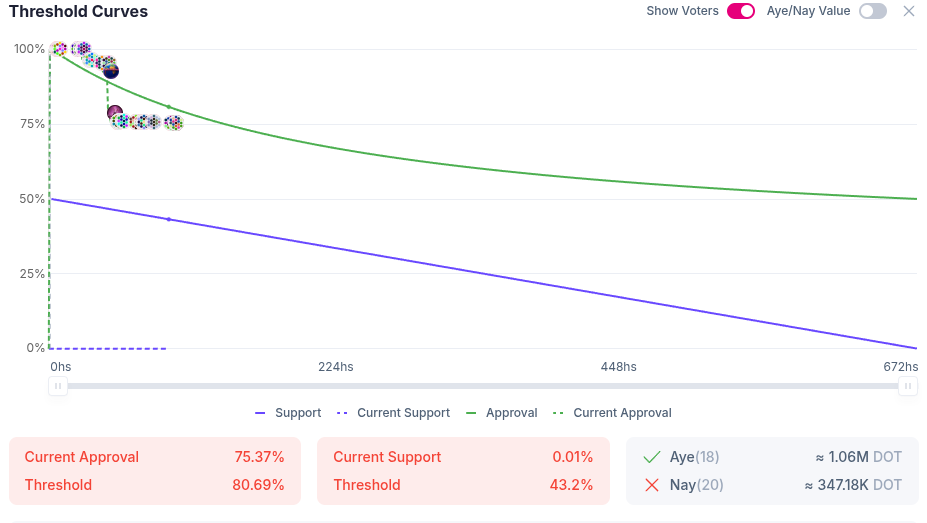
Polkadot‘s Bold Stablecoin Bet
The Polkadot network is poised for a potentially transformative move: the creation of its own native, algorithmic stablecoin tentatively named pUSD. This proposal, spearheaded by Acala‘s co-founder Bryan Chen, aims to build a stablecoin exclusively backed by the network’s native token, DOT. This initiative is generating considerable buzz within the Polkadot community, with early voting reflecting strong support for the project.
The Mechanics of pUSD
The proposed pUSD is envisioned as an overcollateralized debt token. This means that the stablecoin‘s value will be pegged to the US dollar, but its backing will come entirely from DOT tokens locked within the system. This approach mirrors, in principle, the design of established decentralized stablecoins, aiming to reduce dependence on centralized entities like Tether (USDT) and Circle (USDC). The system will leverage the Honzon protocol, a decentralized stablecoin and collateralized debt position protocol currently operating on the Acala network, further bolstering its technical foundation. Additionally, the design incorporates a savings module allowing holders to earn interest from stability fees.
Why Polkadot Needs a Native Stablecoin
The core motivation driving this proposal, according to Chen, is to fortify Polkadot‘s ecosystem. The stated aim is to secure benefits that would otherwise “haemorrhage” away. “Polkadot Hub should have a native DOT-backed stablecoin because people need it and otherwise we will haemorrhage benefits, liquidity and/or security,” the proposal reads. A native stablecoin could increase liquidity, attract new users, and provide an essential building block for a thriving decentralized finance (DeFi) ecosystem within Polkadot.
The Algorithmic Angle and the Road Ahead
Algorithmic stablecoins, while promising greater decentralization, have faced significant challenges, most notably the collapse of TerraUSD (UST). This event served as a stark reminder of the inherent risks associated with this approach. Polkadot‘s pUSD initiative, however, attempts to mitigate these risks through overcollateralization, a design choice that should provide a larger safety buffer. The success of this project hinges on the long-term stability of DOT and the effectiveness of the underlying algorithmic mechanisms. Despite the inherent risks, decentralized algorithmic stablecoins are seen by some as a key ingredient to a fully decentralized financial future. The community currently has over 24 days to vote, and over $5.6 million worth of DOT has been utilized to cast votes.
Potential Implications
- Ecosystem Growth: A successful pUSD could draw more DeFi activity onto Polkadot.
- Reduced Reliance: Decrease dependence on centralized stablecoins.
- Price Volatility: DOT‘s price will play a major role in the stability of pUSD.
- Regulatory Scrutiny: Algorithmic stablecoins remain a focus for regulators.
“Polkadot Hub should have a native DOT-backed stablecoin because people need it and otherwise we will haemorrhage benefits, liquidity and/or security,” – Bryan Chen, Acala Co-founder



